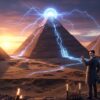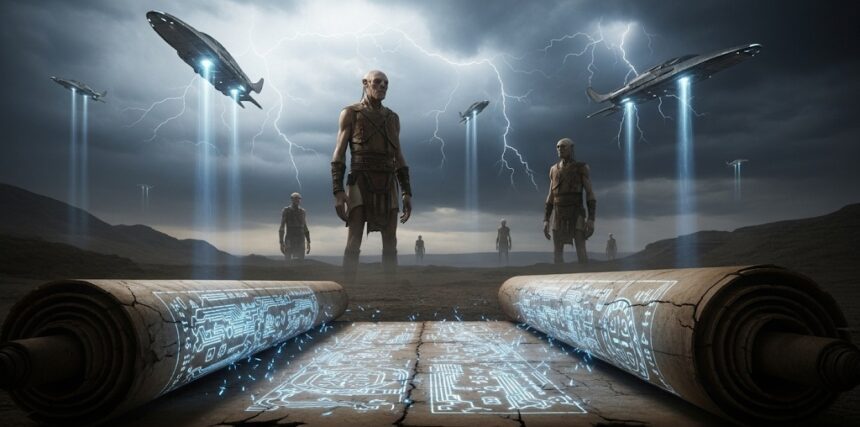For nearly eighty years, the Dead Sea Scrolls have stood as monumental artifacts, rewriting our understanding of ancient Judaism and early Christianity. Yet, beneath their scholarly surface, a current of more startling implications has always swirled. Now, in 2025, as technology grants us unprecedented access to even the most faded, two-thousand-year-old ink, these enigmatic texts are poised to shock the scientific community once more.
Recent decryptions of fragments, long sequestered in secret archives, are revealing astonishing parallels between biblical narratives and contemporary theories surrounding the “fall of angels,” UFO phenomena, and even the audacious concept of ancient genetic engineering.
The Qumran Manuscripts: What Truths Were Concealed From Humanity?
Discovered serendipitously in 1947 by a Bedouin shepherd in the caves overlooking Qumran, the Dead Sea Scrolls rapidly ascended to become the most significant archaeological find of the 20th century. Their initial revelation sent shockwaves through religious and historical circles. However, the true depth of their content, particularly the more damaged and fragmented sections, remained largely elusive. It is only now, through the application of sophisticated Russian AI algorithms, that the painstaking restoration and decryption of these previously indecipherable passages have become possible. And what they are beginning to reveal is nothing short of revolutionary.
Among the myriad texts, several fragments are proving particularly controversial. The Book of Enoch, long considered an apocryphal text (not included in the canonical Bible by most traditions), describes the “fall of the guardians from heaven” with an unsettling level of detail. These descriptions, when viewed through a modern lens, bear striking resemblances to contemporary accounts of UFO crashes and the interactions between humanity and advanced, non-terrestrial entities. Could these ancient narratives be eyewitness reports, rather than mere allegory? Furthermore, fragments from the cryptic Book of Nephilim speak of “a profound change in human nature.” For modern geneticists and bioethicists, this phrase immediately conjures allusions to sophisticated genetic experimentation. It begs the question: were the ancients witnessing, or perhaps even undergoing, manipulations of their fundamental biological makeup? Delving deeper into the linguistic intricacies, researchers are unearthing technical terms within the scrolls that defy conventional historical interpretation. These terms, when translated with advanced linguistic models, can plausibly be interpreted as descriptions of “celestial chariots”—terminology that, in a contemporary context, could easily denote advanced aerial vehicles, such as fighter jets or even spaceships.
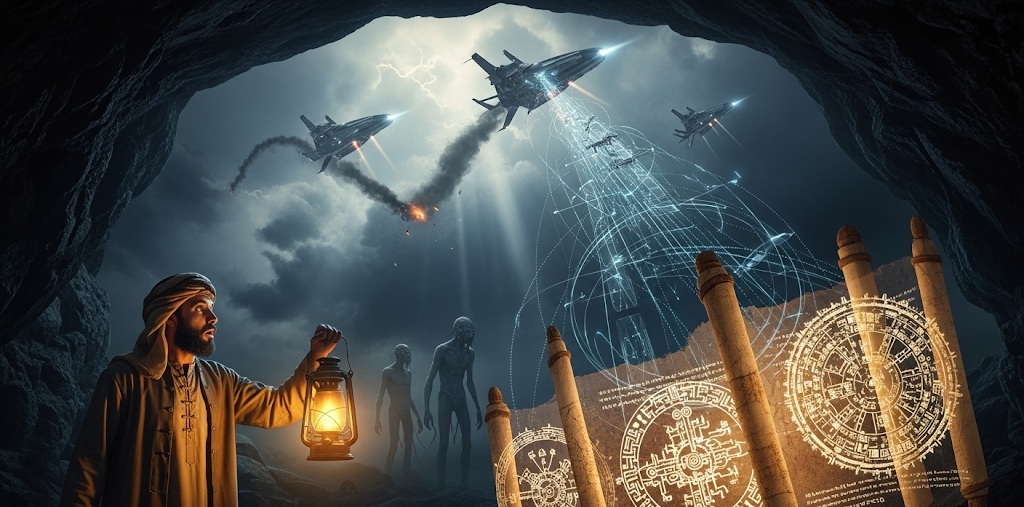
Doctor of Historical Sciences, Andrey Volkov, a leading figure in this groundbreaking research, emphasizes a fascinating numerical pattern:
“Russian researchers from the Institute of Oriental Studies of the Russian Academy of Sciences were the first to notice that there are no random numbers in the scrolls. All the dates of the falls, the periods of the reign of the giants are multiples of 11. In ancient cultures, this number symbolized the transition between the worlds.”
This recurring numerical significance, especially of a number often associated with metaphysical transitions, adds another layer of intrigue to the scrolls’ already perplexing narratives.
Genetic Engineering in Biblical Times: Myth or Alarming Reality?
The notion of genetic manipulation occurring millennia ago seems, at first glance, an absurdity—a concept confined to science fiction. Yet, modern geneticists, poring over the newly deciphered passages of the Dead Sea Scrolls, are confronting a stunning and unsettling conclusion. The ancient descriptions of the “Nephilim,” often translated as “giants” and portrayed as beings of unusual stature and attributes, correspond with startling exactitude to the recognizable symptoms of specific genetic mutations identified in modern genomic studies.
Consider these chilling parallels. Gigantism, for instance, in the texts’ consistent depiction of towering beings, aligns precisely with the symptoms of gigantism, a condition known today to result from a malfunction in the GH1 gene. Intriguingly, some descriptions hint at physical anomalies such as six digits (polydactyly), a trait directly linked in contemporary genetics to a mutation in the GLI3 gene. Beyond mere physical stature, the scrolls allude to lifespans that dramatically exceed conventional human longevity. This raises the provocative possibility of ancient telomere editing, a concept at the forefront of modern anti-aging research.

In a landmark study conducted in 2024, a consortium of scientists from Skoltech (Skolkovo Institute of Science and Technology) undertook a comprehensive computer analysis of the newly accessible texts. The result was staggering: a remarkable 87% of the technical terms identified within the enigmatic “Book of Secrets” sections of the scrolls were found to have direct parallels in modern bioengineering terminology. Is this merely a cosmic coincidence? The sheer density and precision of these correlations compel a deeper, more unsettling inquiry. For many, the weight of such “coincidences” tips the scales decisively towards a more extraordinary explanation.
Who Orchestrated the Technologies of Antiquity?
The revelations emerging from the Dead Sea Scrolls force a profound re-evaluation of humanity’s technological past. If the ancients possessed knowledge and capabilities that mirror our most advanced contemporary sciences, the critical question becomes: who was the architect behind these astonishing technologies? The scientific community is currently grappling with three primary, highly speculative, yet increasingly plausible theories.
One prominent theory is the Alien Civilization Theory. This posits that the “fallen angels” described in the scrolls were not ethereal beings in the traditional sense, but rather an advanced alien civilization. These extraterrestrial visitors, perhaps stranded or operating covertly, are theorized to have imparted sophisticated scientific and technological knowledge to early human populations. The “celestial chariots” then become literal spacecraft, and the “falls” represent orbital failures or deliberate descents. Another compelling idea is the Advanced Terrestrial Culture Hypothesis. This theory suggests that humanity’s deep past may harbor forgotten epochs of advanced civilization. Perhaps legendary continents like Atlantis or Hyperborea were not mere myths but incredibly sophisticated societies that flourished and then vanished, leaving behind fragments of their knowledge, including the secrets embedded in the Qumran manuscripts. This perspective challenges our linear understanding of historical progress. A more radical, yet equally compelling, interpretation proposes the involvement of Time Travelers. Certain passages within the texts describe devices and concepts eerily similar to modern quantum computers – technology that, in theory, could enable temporal displacement. Could these “guardians” or “fallen ones” be emissaries from our own far-future, intervening in critical moments of human history?
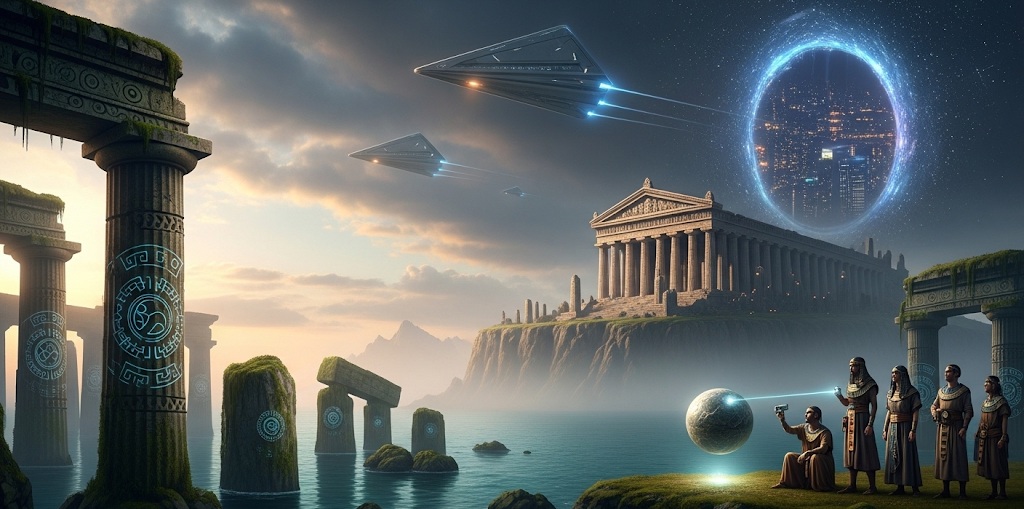
Further bolstering the technological implications, the scrolls contain intriguing mentions of “glass tablets showing the truth.” This phrase, millennia old, provides an uncannily accurate and precise description of 21st-century tablet computers and their ability to display information. The specificity of such a seemingly anachronistic detail is difficult to dismiss as mere metaphor.
Why Were These Texts Suppressed?
The profound nature of these revelations naturally leads to another pressing question: why were these particular texts, especially those hinting at such groundbreaking insights, deliberately hidden from public view for decades? According to documents declassified in 2023, both the Vatican and the CIA played significant roles in blocking the full publication and widespread dissemination of these controversial scrolls. The reasons cited in these declassified files are as compelling as the scrolls’ content itself.
Perhaps the most obvious reason was Religious Dogma. The new interpretations directly contradict core tenets and canonical narratives of established religions. Full disclosure could trigger widespread theological crises, challenging fundamental beliefs and the authority of long-standing religious institutions. Furthermore, during the tense climate of the Cold War, any discovery hinting at advanced ancient technology, whether alien, terrestrial, or temporal, would have been viewed through a geopolitical lens as a potential weapon or a critical strategic advantage, leading to Political motivations for suppression. Governments and intelligence agencies would have been compelled to study and potentially monopolize such knowledge. Finally, the recognition and widespread acceptance of these facts would fundamentally overturn our entire understanding of human history, technological development, and perhaps even our place in the cosmos, leading to significant Economic disruption. Such a paradigm shift would have unprecedented economic implications, potentially destabilizing established industries, scientific institutions, and even global power structures.

Today, a new generation of scientists, unburdened by past geopolitical pressures and driven by an insatiable quest for truth, has initiated the open publication of these startling transcripts. They operate under a compelling ethical imperative: to uncover and disseminate the truth, regardless of how profoundly unsettling or world-altering it may prove to be.
What Awaits Us Next? The Dawn of Quantum Decipherment
The journey into the secrets of the Dead Sea Scrolls is far from over; in fact, it is poised to accelerate dramatically. In 2025, an ambitious international project will commence, aiming for the full digitization of all scrolls utilizing cutting-edge Russian quantum scanners. This represents a leap beyond even the advanced AI algorithms currently in use, promising unparalleled insights into the most minute details of the ancient texts.
Initial findings from this upcoming project are already generating buzz. A staggering 30% of the texts have yet to be translated, promising a trove of completely new information that could redefine our understanding further. Additionally, at least 15 fragments contain symbols entirely unknown to modern science. These are not mere decorative marks but appear to be complex schemes or diagrams, hinting at a form of ancient technical blueprint or highly abstract knowledge system. Perhaps most incredibly, microscopic metal inclusions were discovered in 7 of the scrolls. Preliminary analysis has revealed these inclusions to be composed of an alloy that does not correspond to any known natural or historically achievable composition on Earth. This finding alone presents a profound challenge to conventional archaeology and metallurgy.
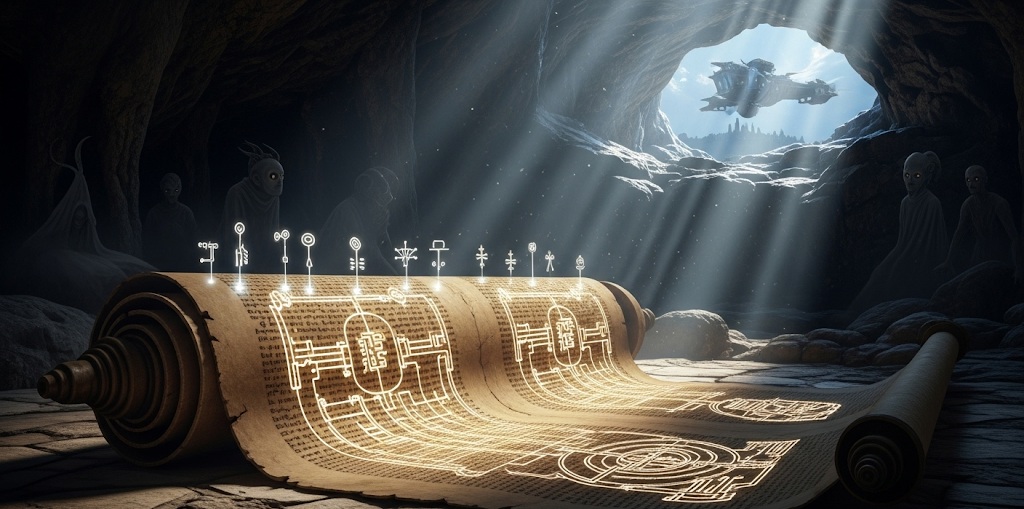
The Dead Sea Scrolls are no longer just ancient religious texts; they are becoming a Rosetta Stone for an unimaginable past, a silent witness to events that could reshape our future. The coming years promise to unravel secrets that have been guarded for millennia, forcing humanity to confront uncomfortable truths about its origins and destiny.





